Bobbi Baugh loves to deeply explore her subject matter, whether following the life and dreams of a character, or delving into the depths of nature. Her student days and career in stationery design made good use of her passion for printing. But it wasn’t until she left the family business that she was able to concentrate full-time on her art.
Bobbi’s collaged layers of monoprinted, painted and stencilled fabrics include photo transfers and stitching. The harmonious colours and the layers of interest attract the viewer’s attention and encourage them to linger. A glimpse of a window reflection or a cracked wall in a building might catch the eye, making you want to pause and reflect on her work.
Read how Bobbi’s artistic life evolved over time. She’s explored a wide range of techniques including monoprint design, acrylic monoprinting, screen printing, photo transfer and collage. Bobbi aims to make work that gives the viewer multiple layers of meaning and uses a mix of techniques to achieve this. After time spent exploring a variety of processes in depth, she started to get the results she was looking for. Then she began to refine her layered processes while investigating the layers of life, concepts and stories that intrigue her.
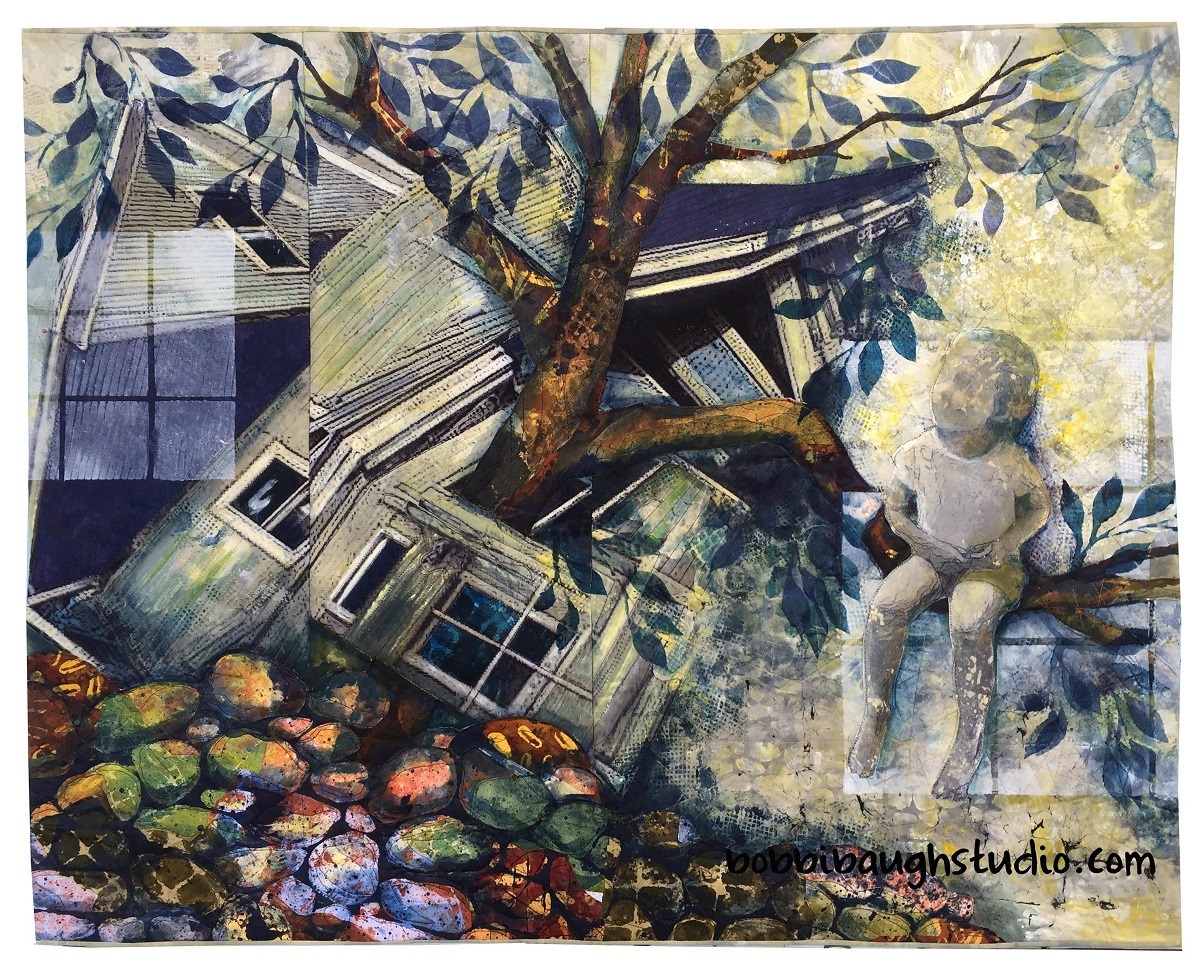
The possibilities of printmaking
What initially attracted you to textiles as a medium?
Bobbi Baugh: I was drawn to textiles as a medium because of its relationship to printmaking. I knew a little about fabric as I had sewn clothes as a teenager and created sculptural items with stiffened fabric. However, I was not familiar with the concept of creating fabric designs.
I joined a local surface design and art-making group in 2011 and discovered that monotype printing, relief printing, screen printing and collage could all be part of working with textiles.
I had a professional background in commercial printing on paper. I had also taken some classes and workshops on printmaking as an art medium.
Although I had learned very few techniques and had a very limited visual vocabulary, I could imagine endless possibilities and that’s what got me started.
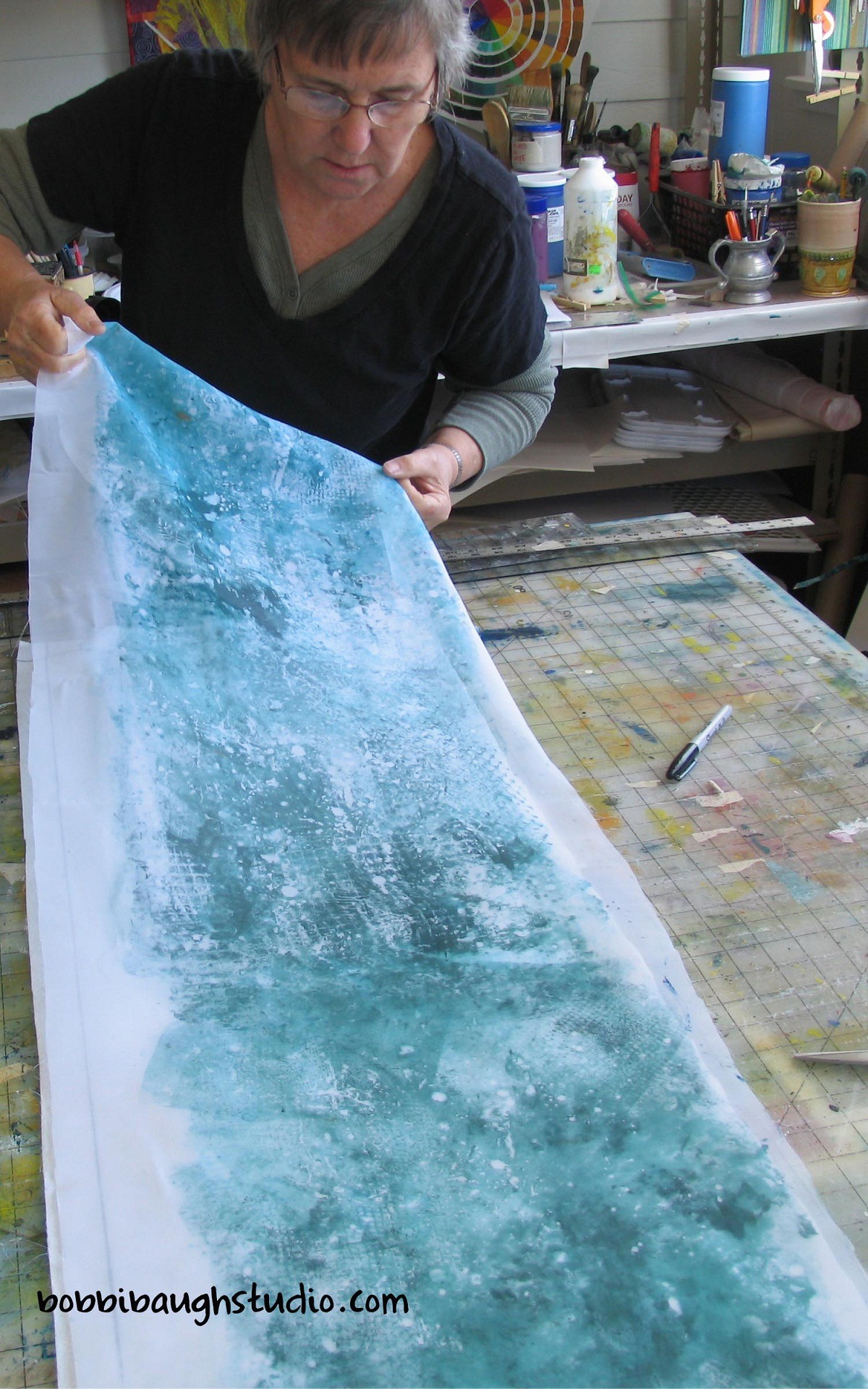
What or who were your early influences?
As an undergraduate art student, my exposure to creating work was very generalised. I took courses in drawing, watercolour, printmaking, photography, three-dimensional work and art history.
It was a small art department and the program did not call for specialising in one particular medium or digging deeply into concept development. However, it did provide an introduction to basic artistic principles and various mediums, and I subsequently pursued several independent studies in watercolour.
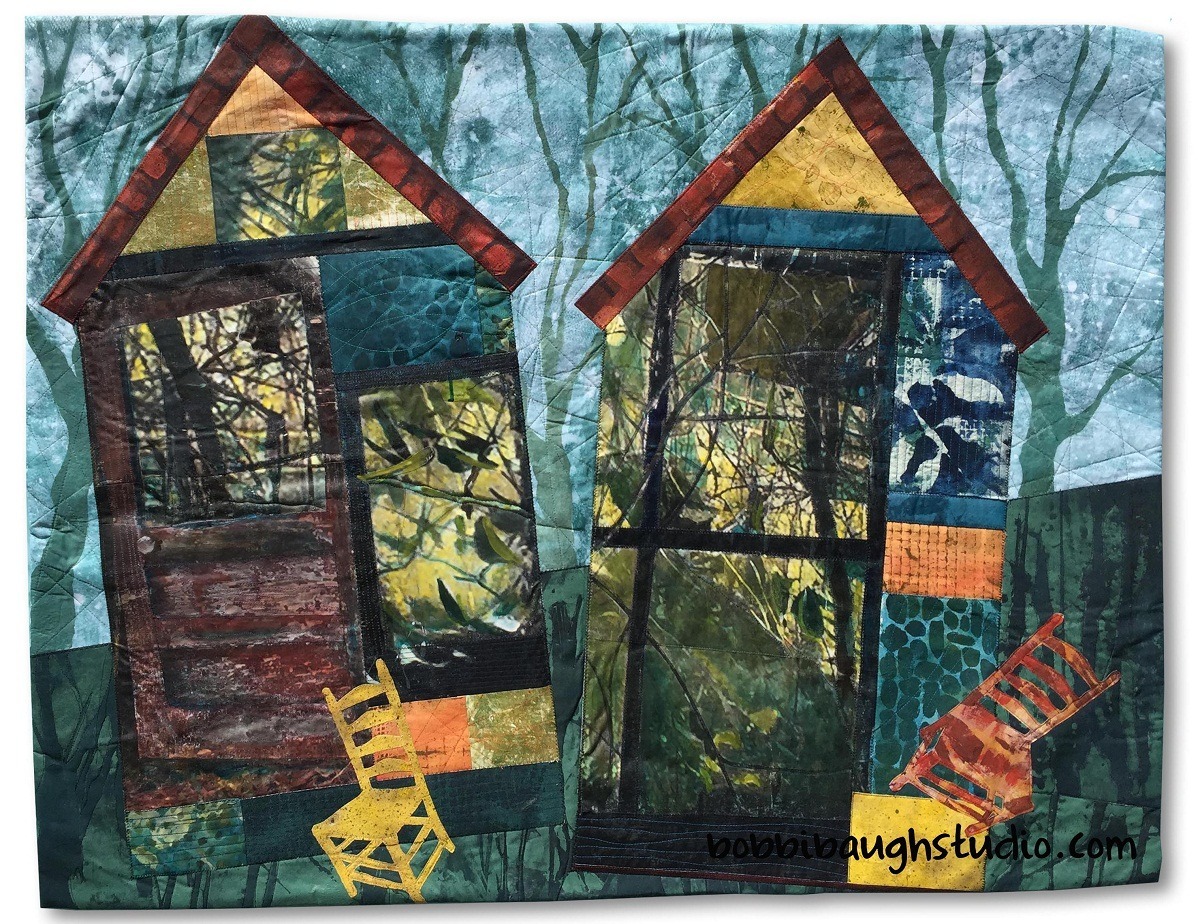
What was your route to becoming a textile artist?
The creative part of being an artist has always been a part of who I am; finding joy in making, finding peace in the solitude of working on projects.
The disciplined part of working as an artist and the opportunity to pursue art as my life work has evolved over time. Until 2014 I had a full-time career in printing and stationery product design. Then I made changes in my personal life, that included leaving the family business, which enabled me to practice studio work full-time.
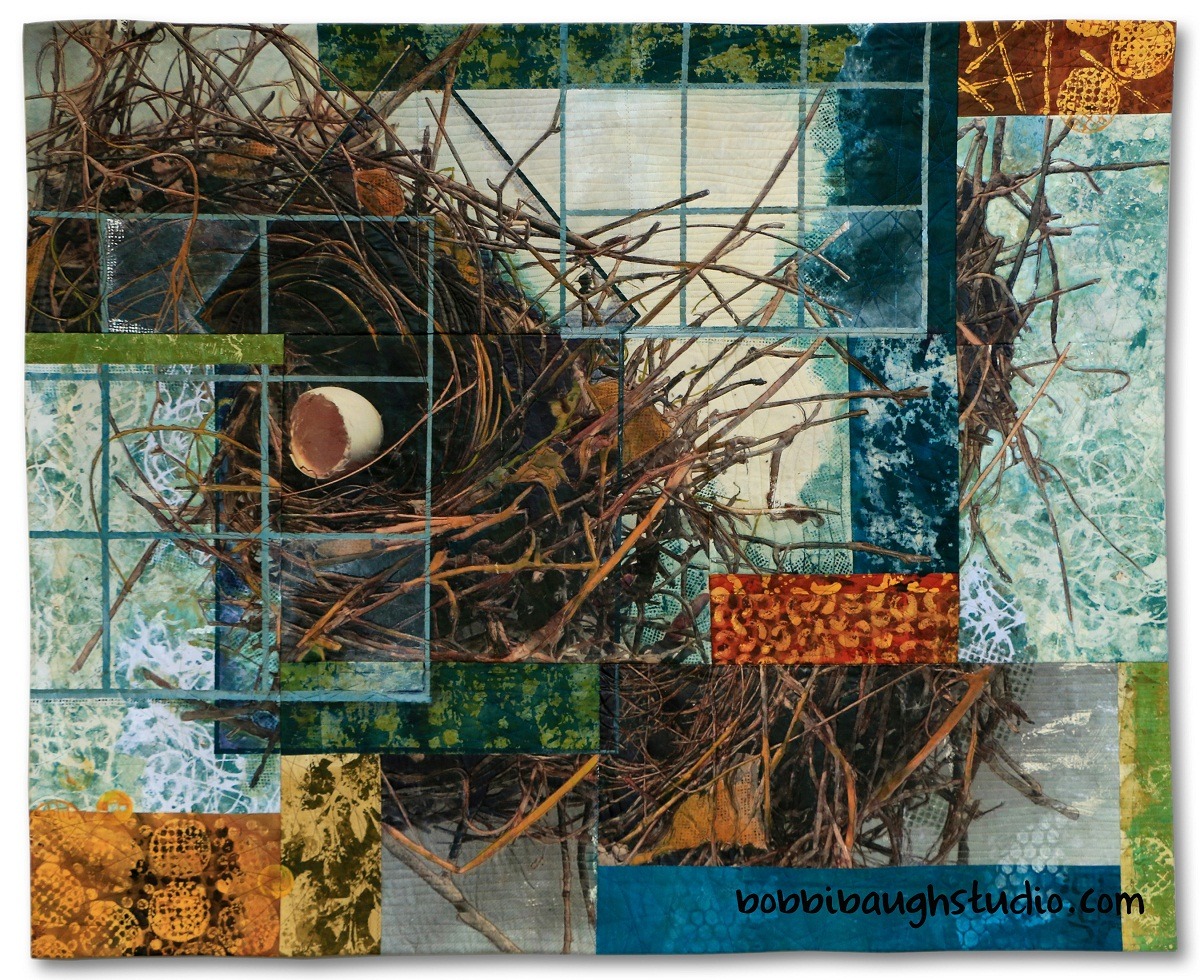
Sketches to fabric prints
Tell us about your process from conception to creation…
I work out ideas in my sketchbook, but I almost never work in colour there. I record ideas visually with a pencil or ballpoint pen. Once I come up with an idea I spend time exploring it, composing it in a number of different ways to see what will work best.
I want to have a good idea of content, composition and values before I start creating my fabric designs.
Next, I create the fabric design. Generally, I make a batch of fabric with a particular project in mind, working to create colours, values and patterns that will accomplish what I’ve outlined in my sketches. This is the most spontaneous and serendipitous part of the process.
Of course, I always end up creating more than I need for one project, so I am building up a valuable stash of pieces that I can draw from in future works.
When I have sufficient printed cloth, I begin to compose my collages. Recently I have been working on larger works, around 90cm x 115cm (35″ x 45″). To do this I have to work with smaller sections that will fit in my sewing machine. I collage fabrics onto the backing and stitch an overlay of patterns for texture. Those pieces are joined by machine stitching, with more painting and collage added to the artwork after it’s been constructed.
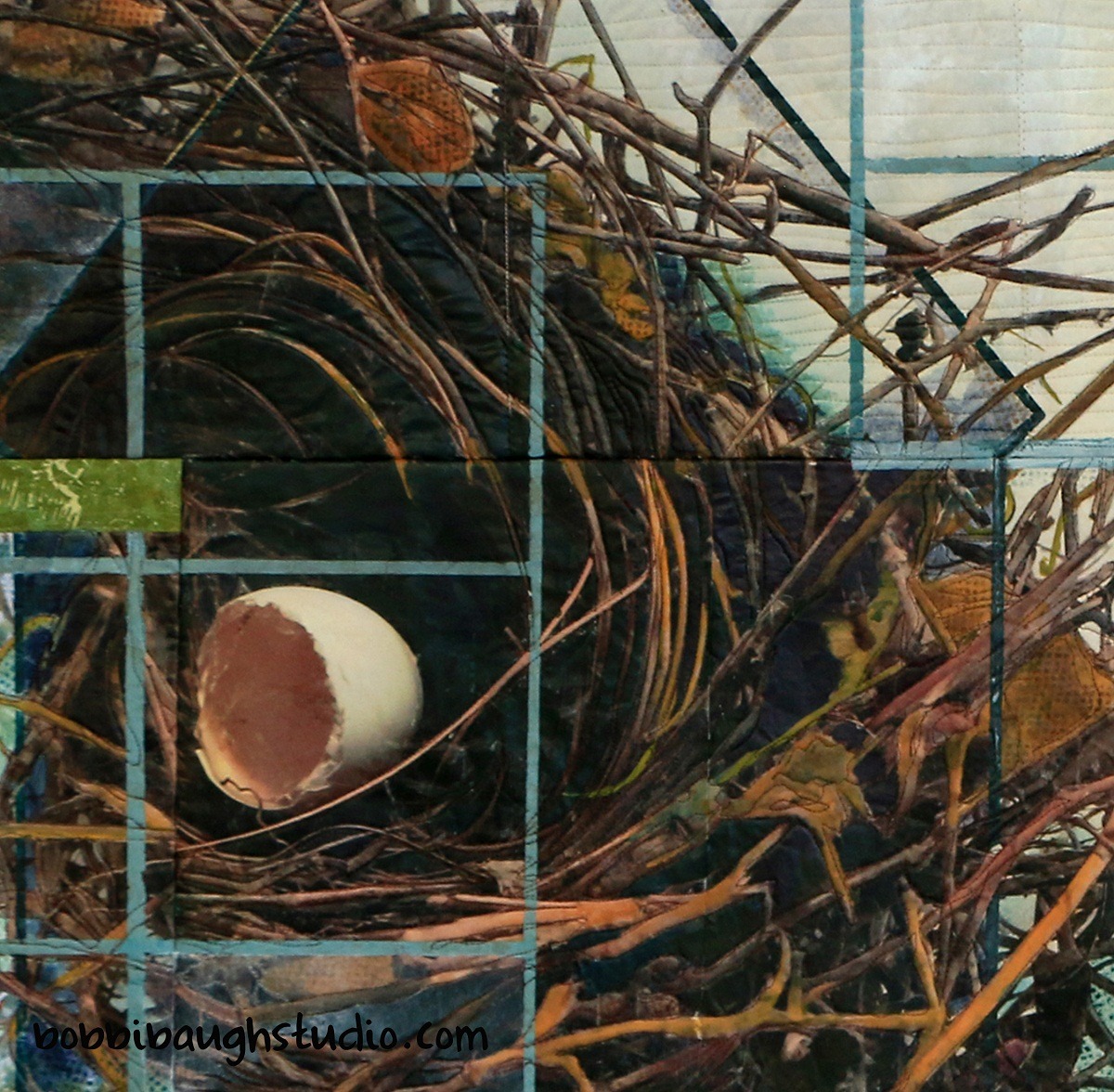
Tell us a bit about your chosen techniques…
I create all of my images with acrylic paint, working almost exclusively on cotton calico muslin and sheer polyester. I frequently combine the two fabrics side-by-side in my works.
All of my image-making is very low tech. I paint with foam rollers, print with hand-cut stencils, relief print with hand-cut linocut blocks and stamp with found objects. I combine all these techniques with monotype printing on a gelatine plate.
I paint wet-into-wet, wet-into-dry, and also with little dilution for opaque colour. For collaging my fabric to the backing fabric, I use a liquid matte medium or gel matte medium.
I also include photo transfers into my compositions. I love the mixed reality of a photo next to a printed pattern. For this, I also use a low tech process, working from colour laser copies transferred to cloth using gel medium. It is a tedious and imperfect method, but I love the results and the character of the photos in the fabric. I frequently enhance the photos with acrylics and with stitch.
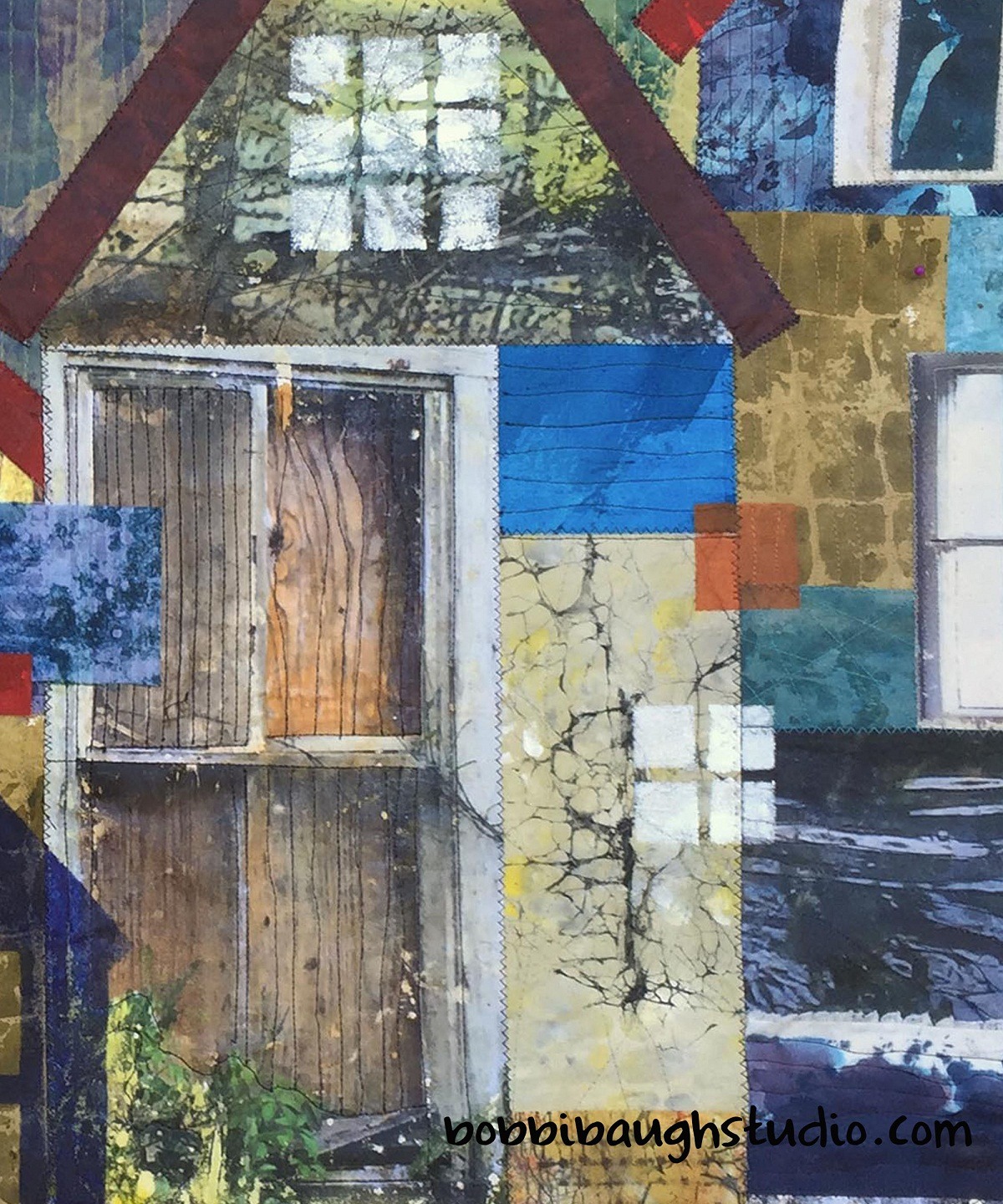
What currently inspires you?
I am drawn to implied stories. I like images to be interesting and compelling, without being so literal that a viewer cannot inject their own meaning into a work.
I work in series; for example, I created a number of pieces dealing with a girl’s journey and have also spent time exploring the concept of home.
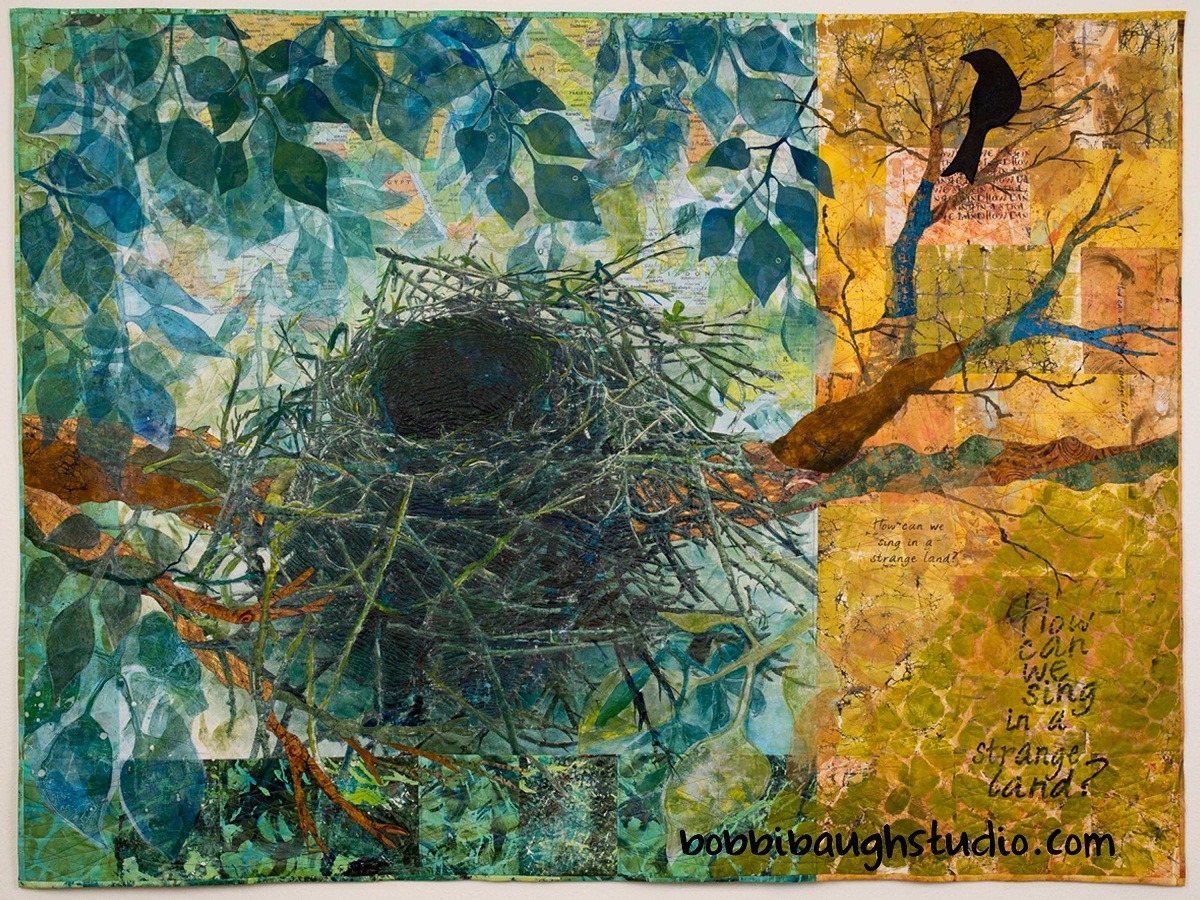
Avoiding distractions
Tell us about a piece of your work that holds fond memories…
I love How Can We Sing in a Strange Land, which was created for the Diaspora/Immigration Show at the Textile Museum in Washington DC in 2016.
It was the largest work I had made at that point, and the most challenging. I was very involved, both in a tactile way and in an emotional way, with the big photographic bird nest that is the focal point of the work.
I used a number of experimental surface-design techniques, layering sheer printed shapes over other fabrics for the first time. I was thrilled that this art quilt found a home with a collector.
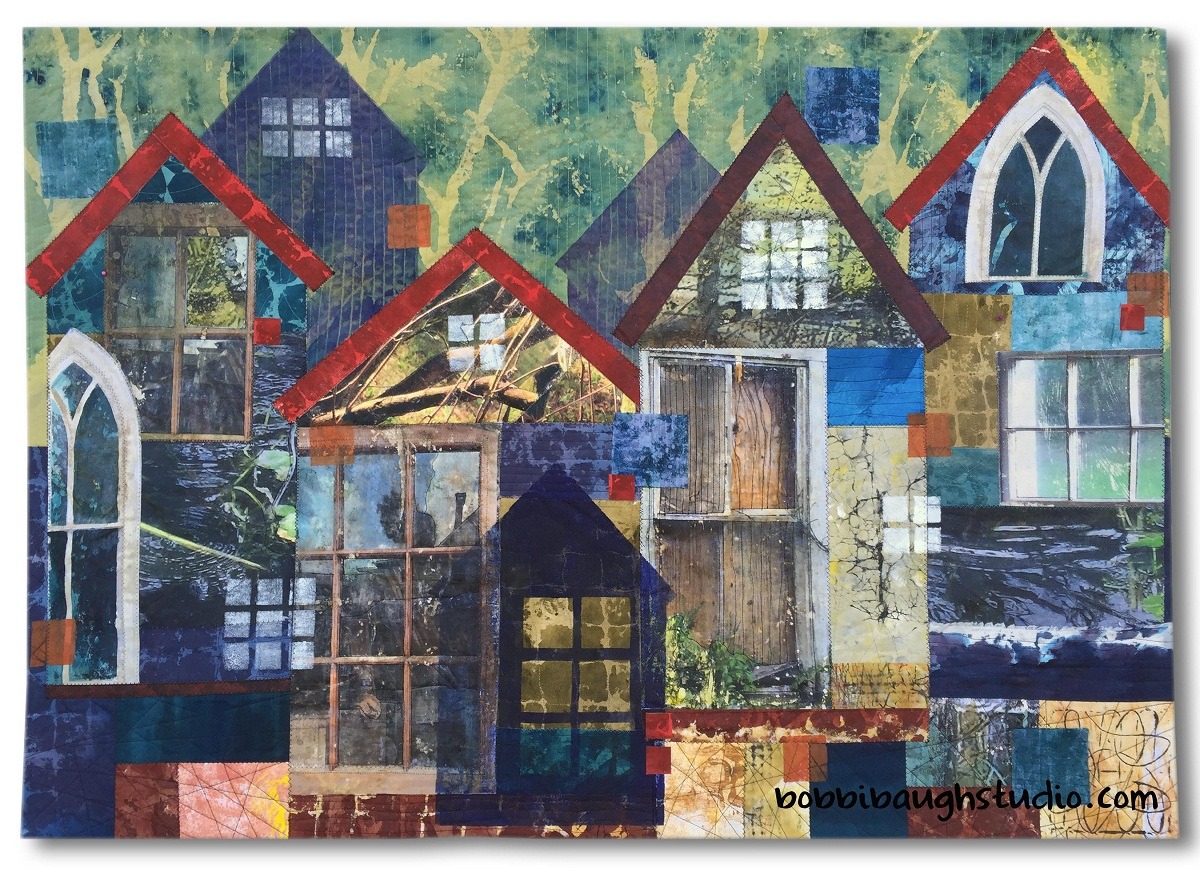
How has your work developed and how do you see it evolving in the future?
The first few years of my work with fabrics were all about developing a visual vocabulary. I was learning techniques that I could employ reliably to achieve desired results.
Once I was comfortable with my methods, I was free to begin exploring concepts and stories.
I prefer creating in series and so far I have never run out of ideas. I hope to make work that gives viewers multiple layers of meaning to explore and consider.
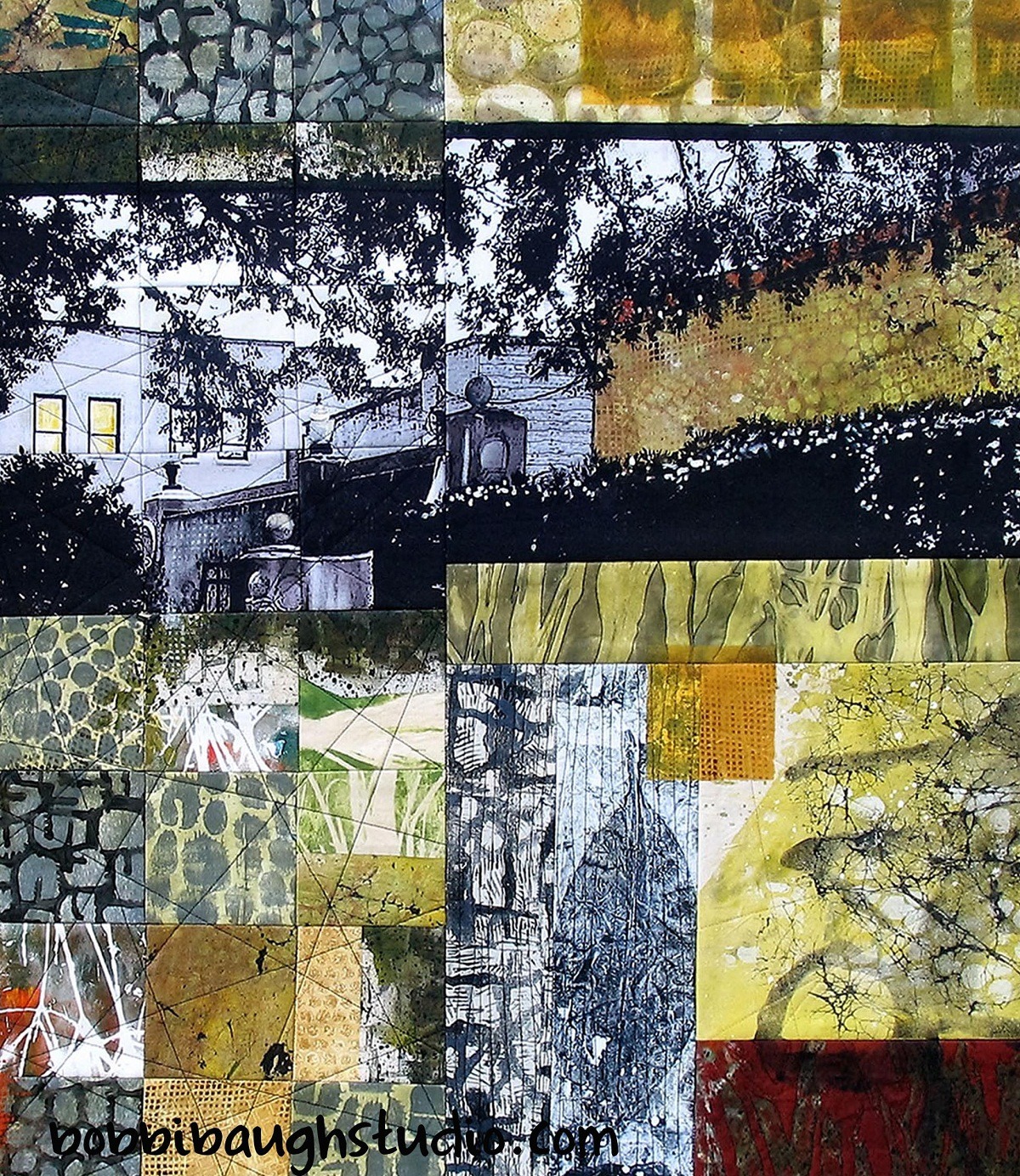
What advice would you give to an aspiring textile artist?
Each artist has a unique “why”. Don’t lose sight of that. What’s important to you is your unique voice.
It is very easy to be seduced by technique, to focus exclusively on how to make the work. Textile art-making is so fascinating and varied.
There’s lots of temptation, but remember that the techniques are not the art – the idea you are communicating is the art. Don’t forget that your ideas are what is most important.
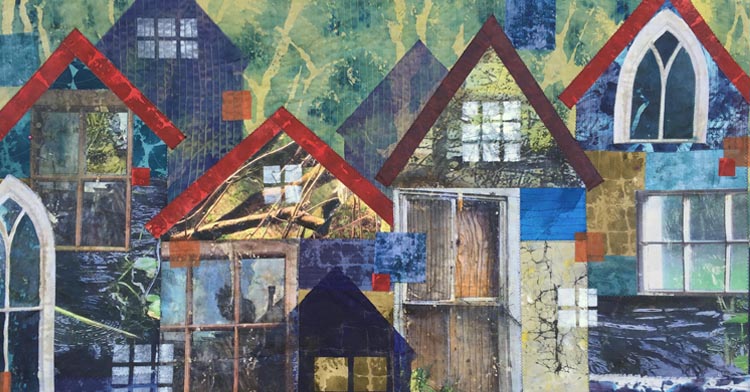
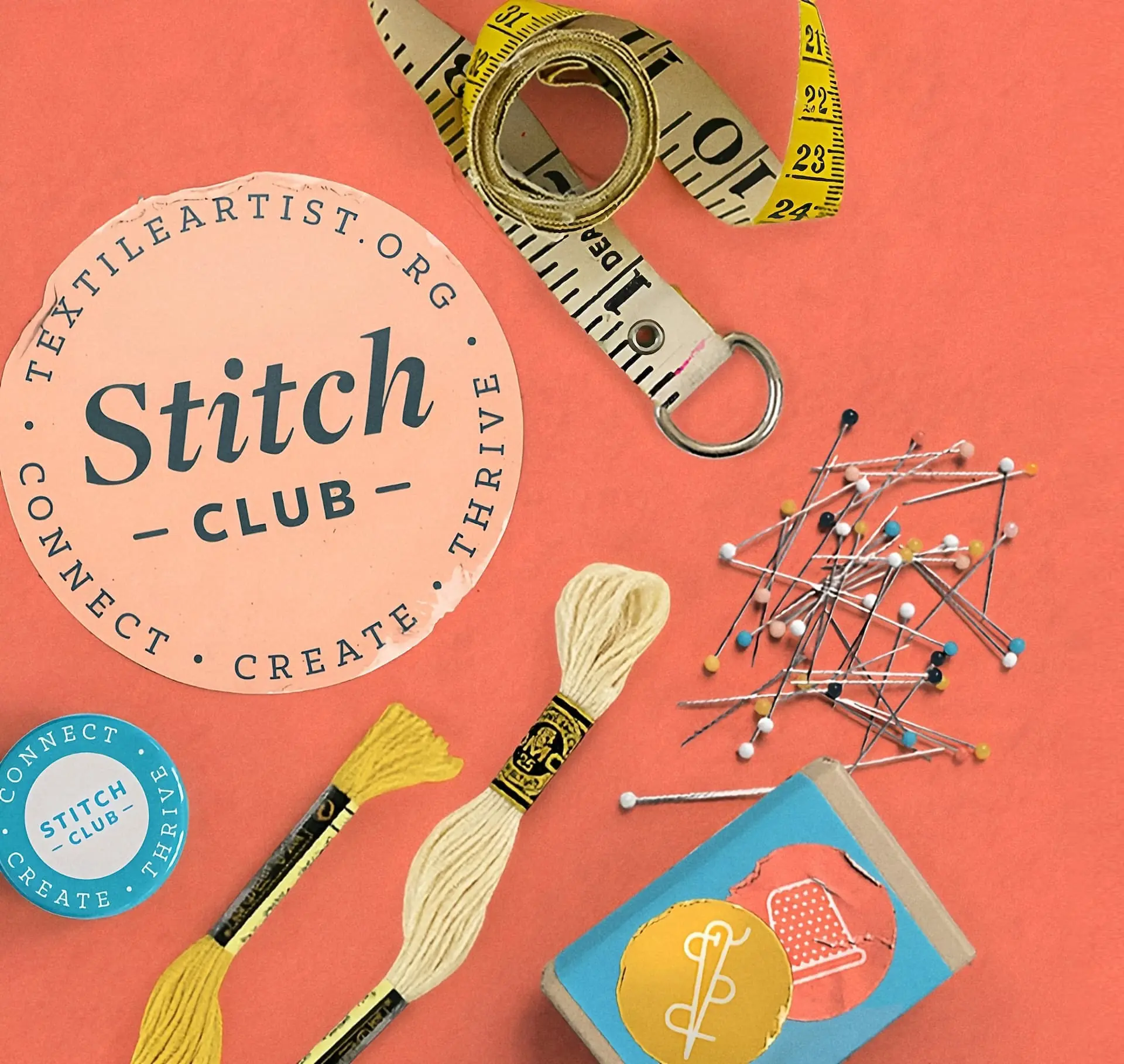

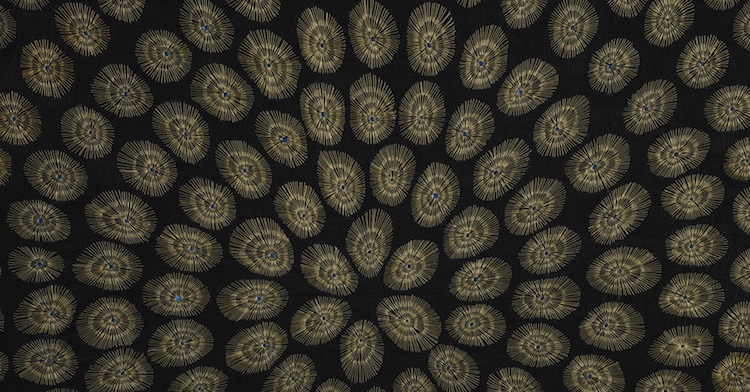
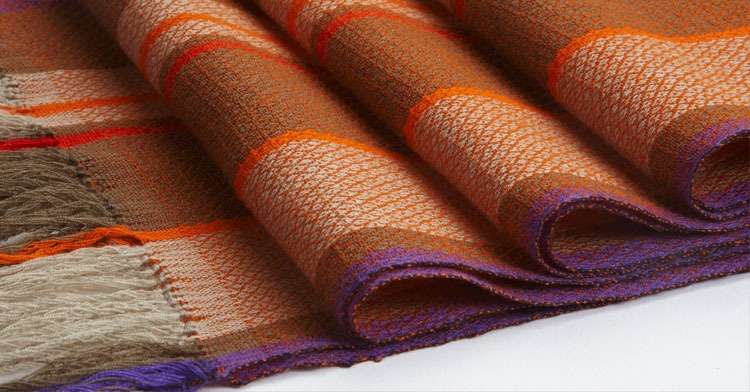
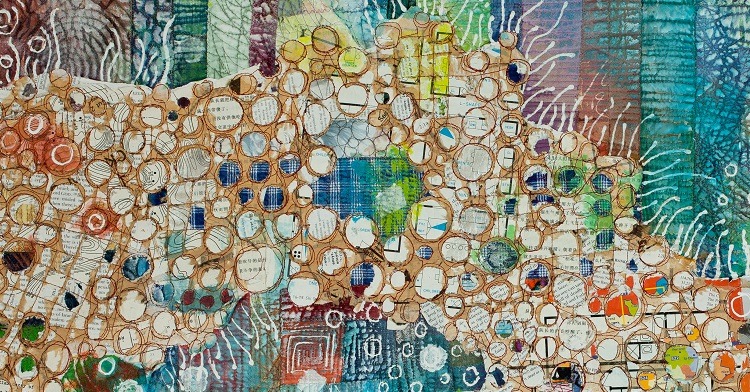
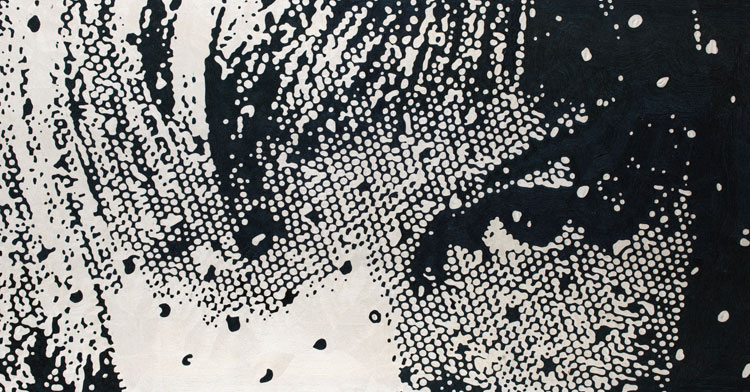
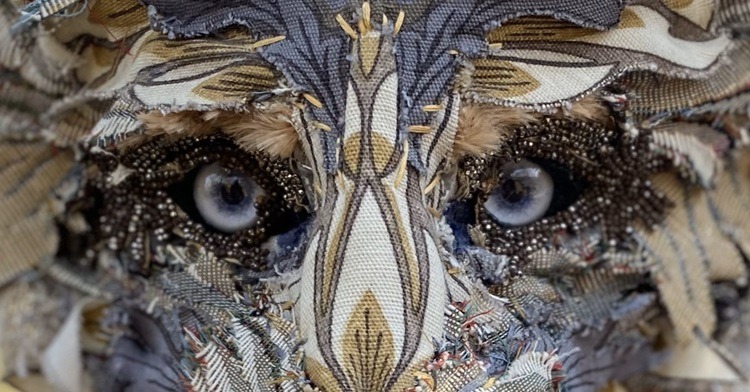
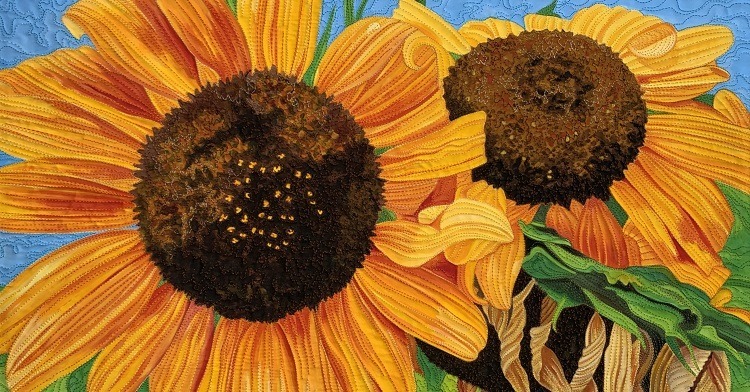
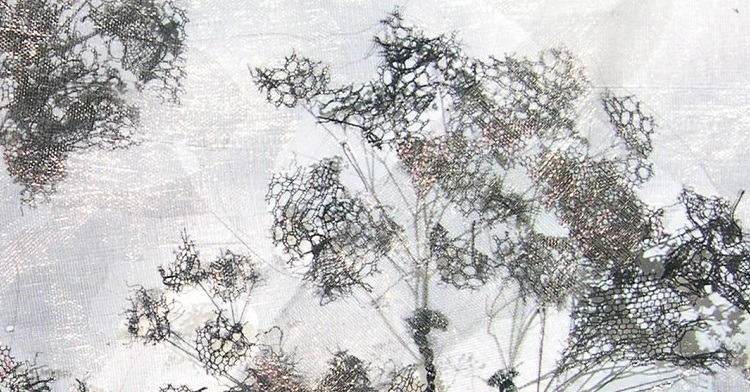
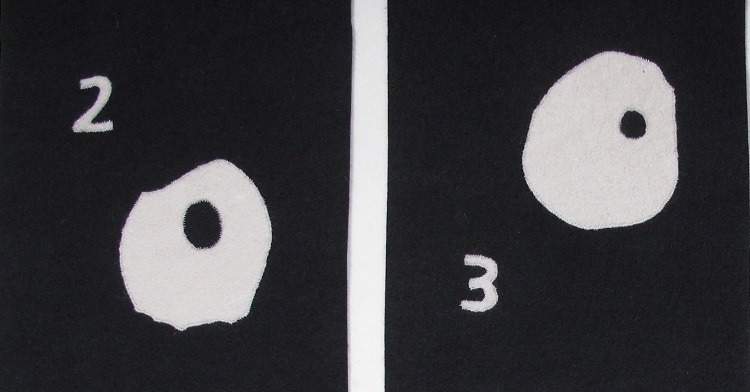
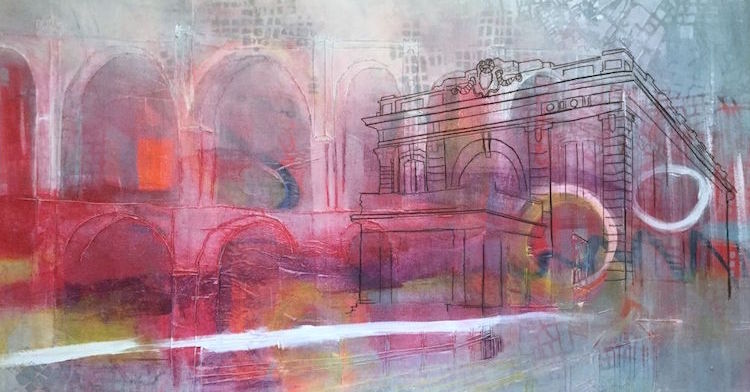
7 comments
Janet Lynch
Loved this work. So thought provoking. Makes me want to know more. Thank you for sharing images of your work.
Lynne Smith
One of my favourite artists. I find her work endlessly engaging
Mary Chris
Marvelous! And it is so true that the message to communicate is the most important. I often forget that and get caught up in the techniques. I’m just starting experimenting with fabric art. I somehow inherited 25 fabric swatches (48 pieces per swatch) and have a universe of fabric art opened up to me! I’m so excited. Glad I found this page! 🙂
Birger Nancy
I am fascinated by Bobbie’s work.The layers are so well blended together I am not sure what techniques she used. While I wish I knew the answers, I love what she has done.
sabrina
Very interesting works!
sabrina
Chris R
What the Walls Would Reveal is spectacular. I’m encouraged that she’s developed as an artist fairly “late” in life.
Regina Dunn
Superb article. Bobbi has a wonderful way of layering images and telling a story.